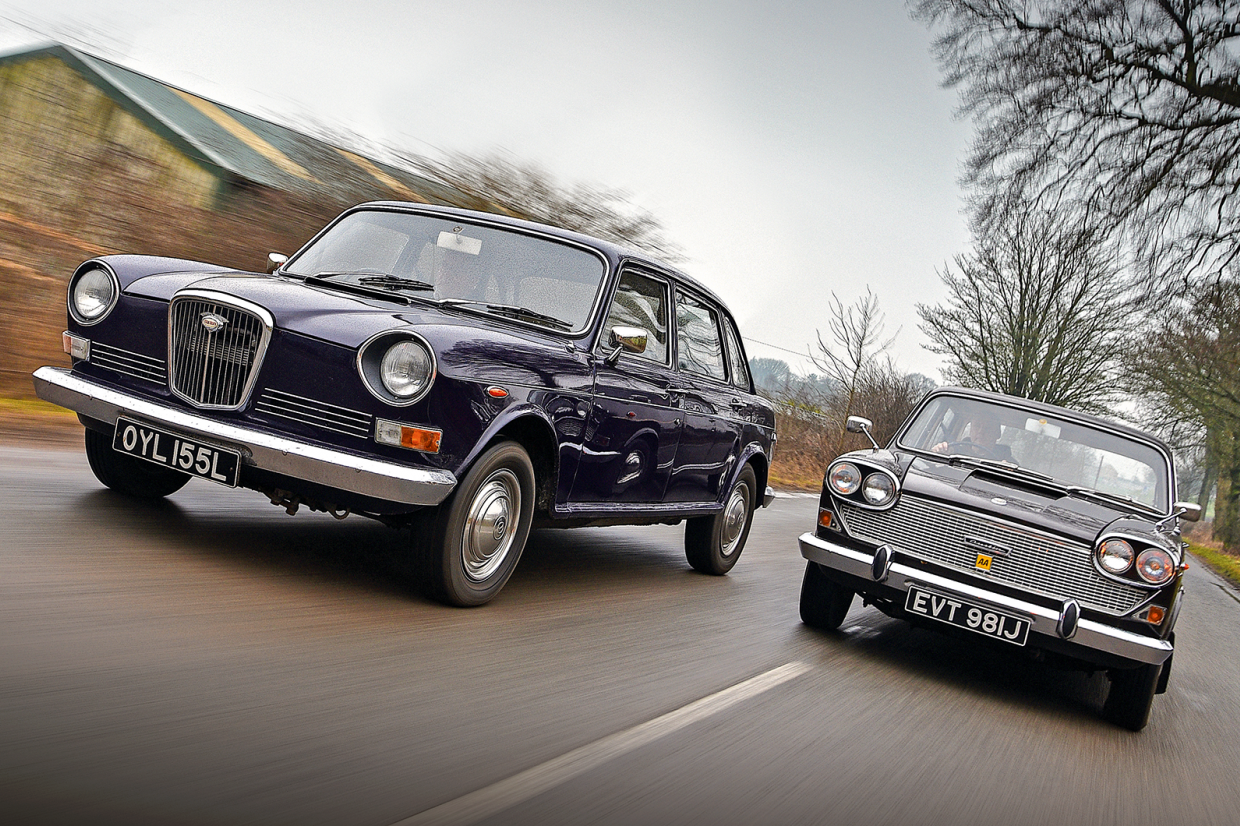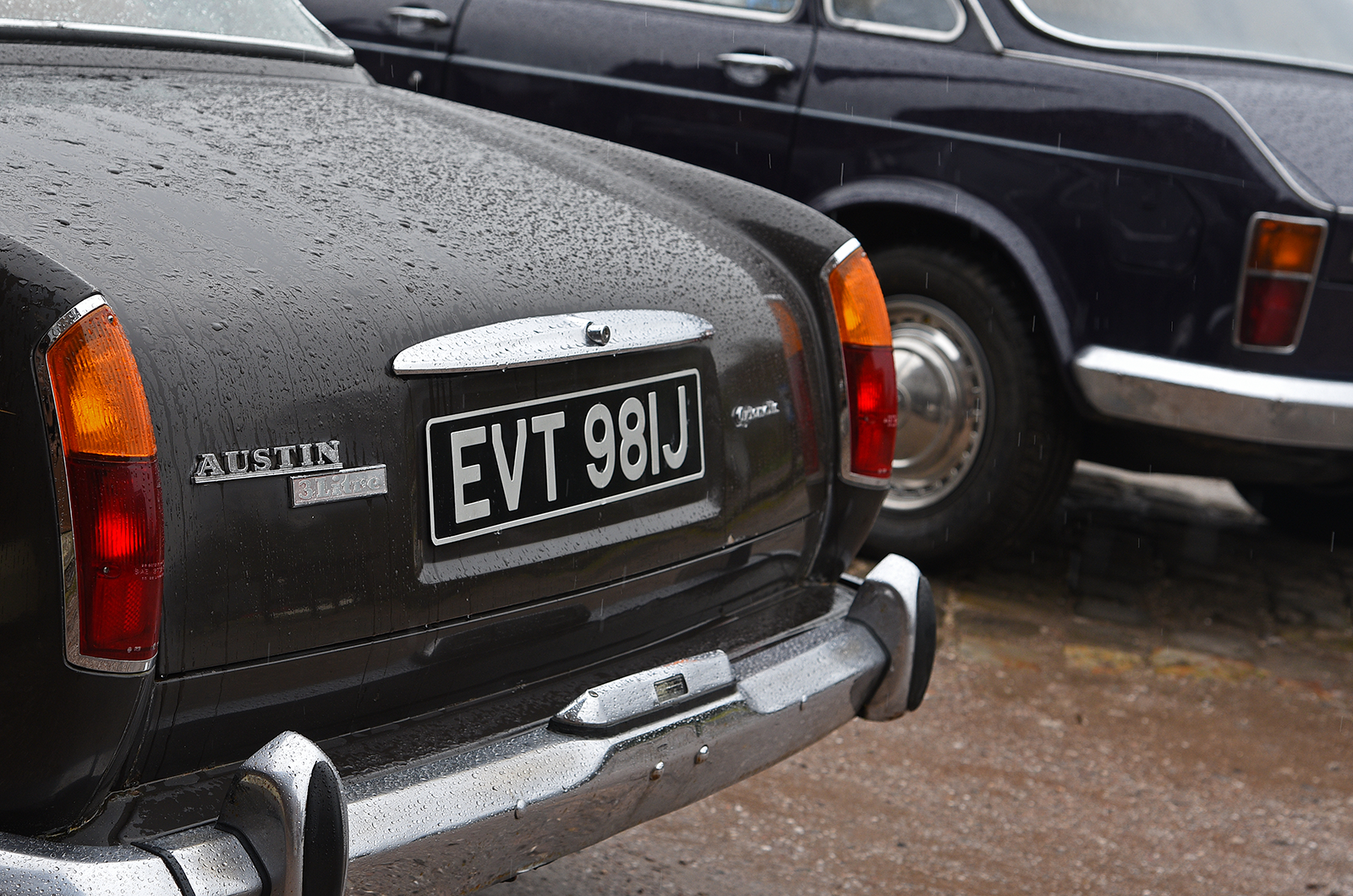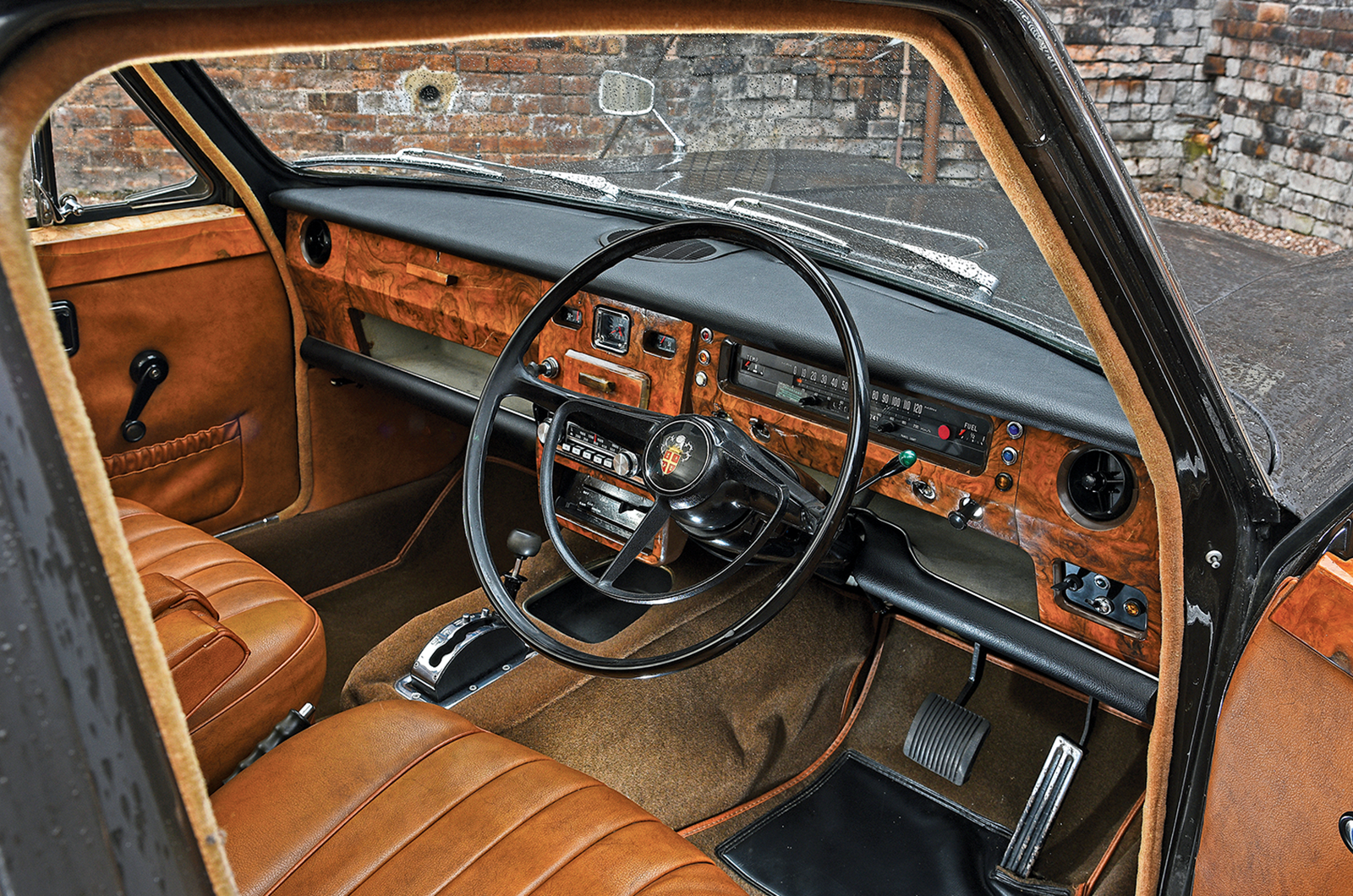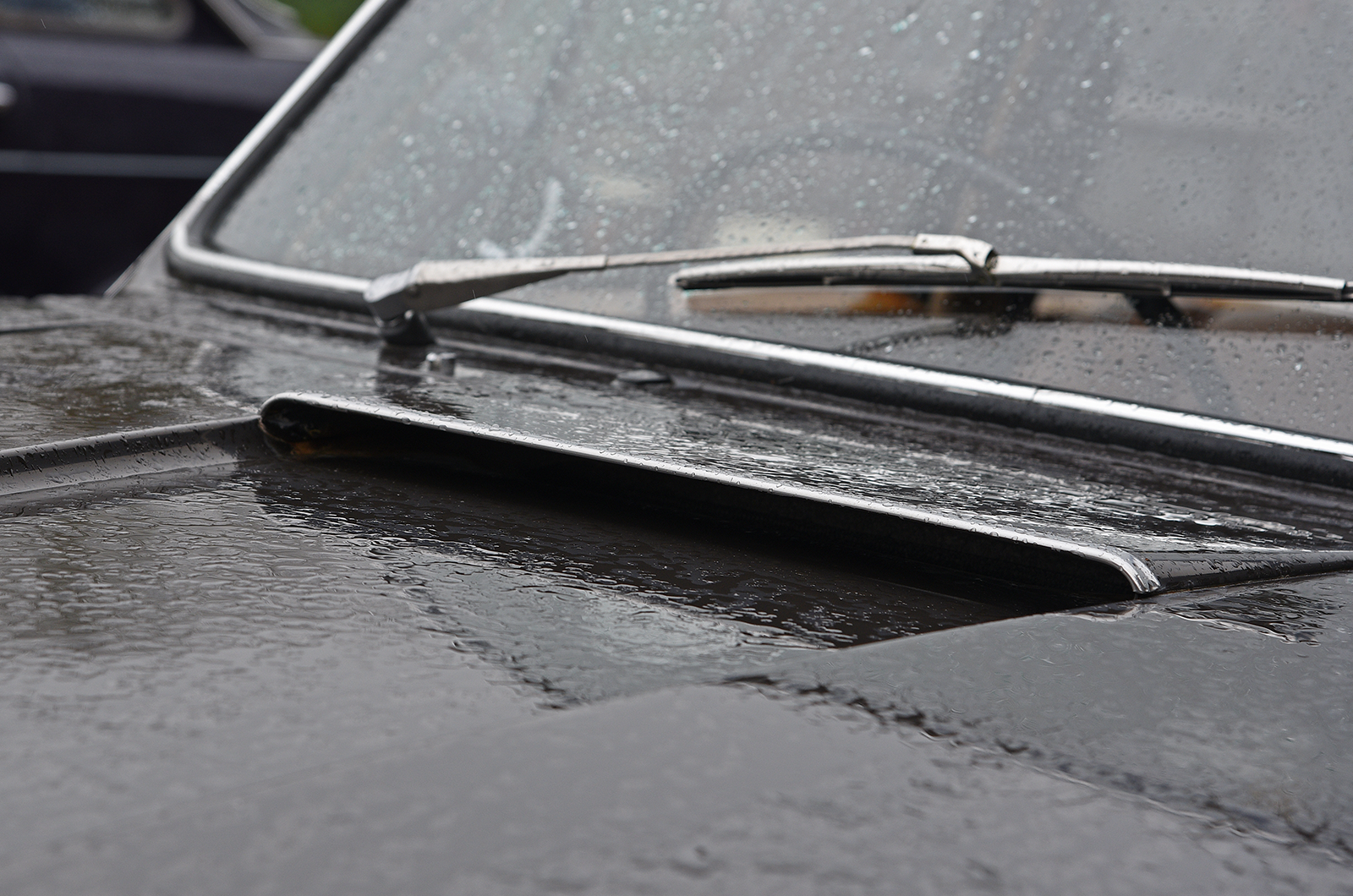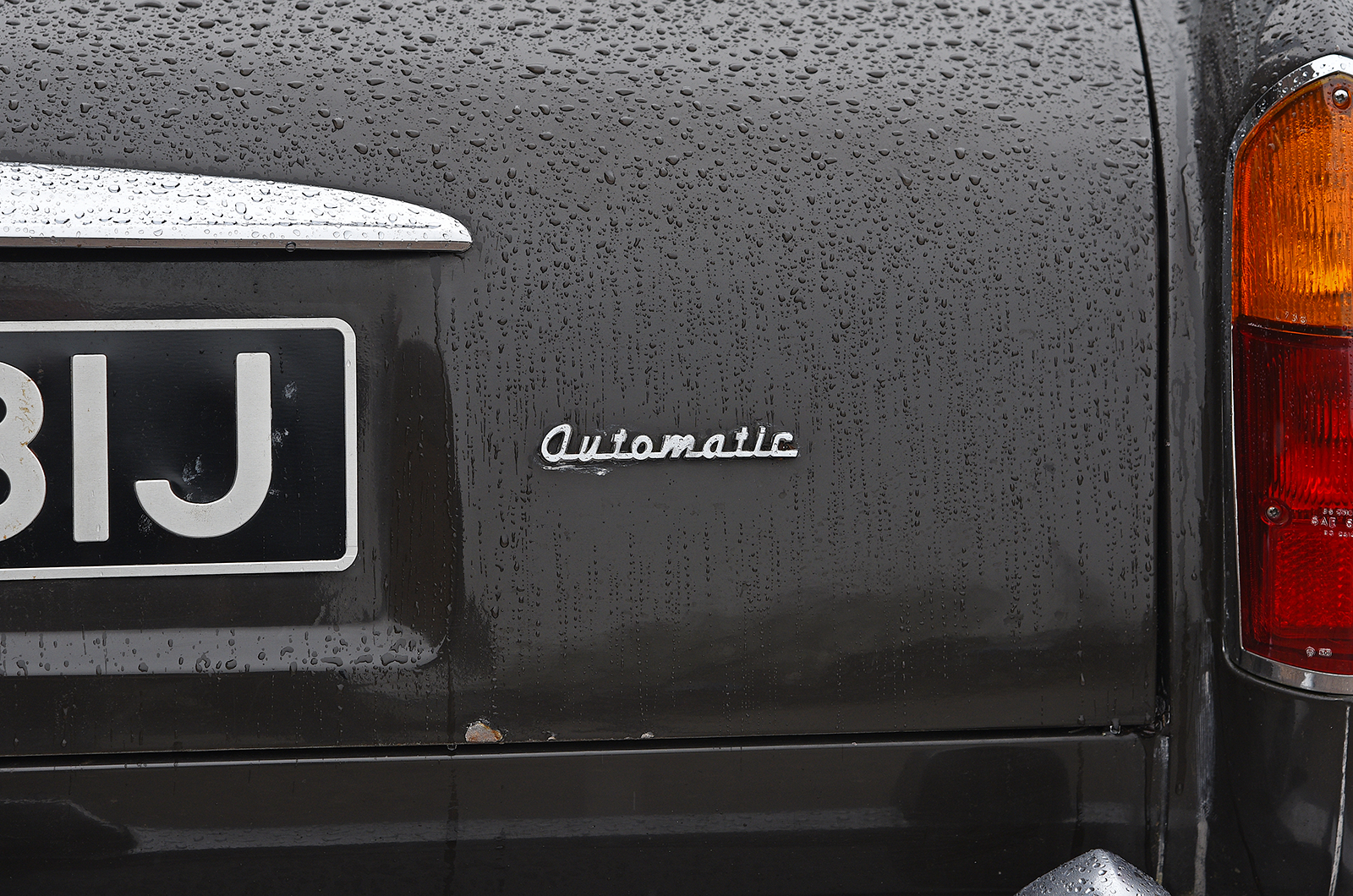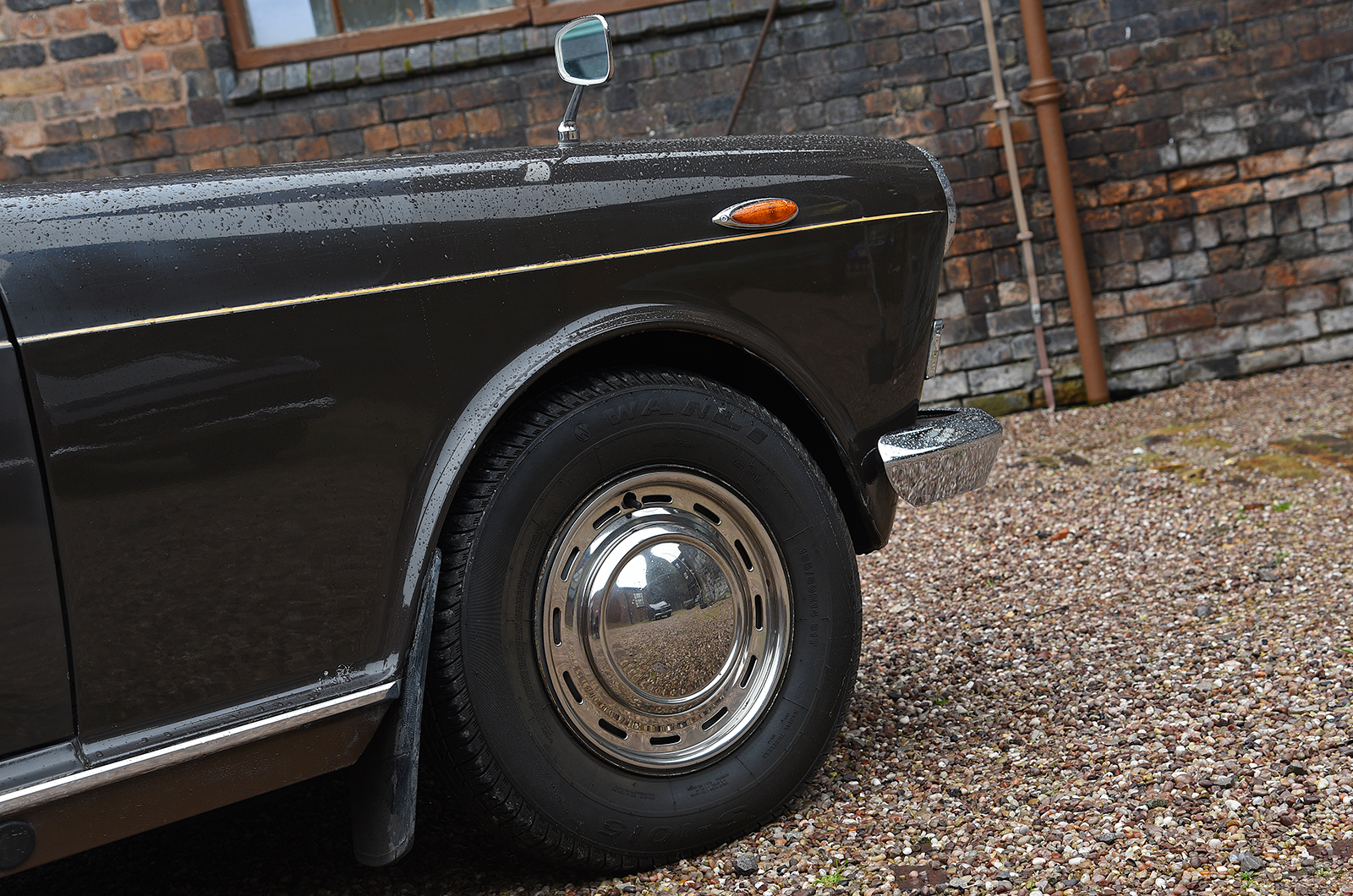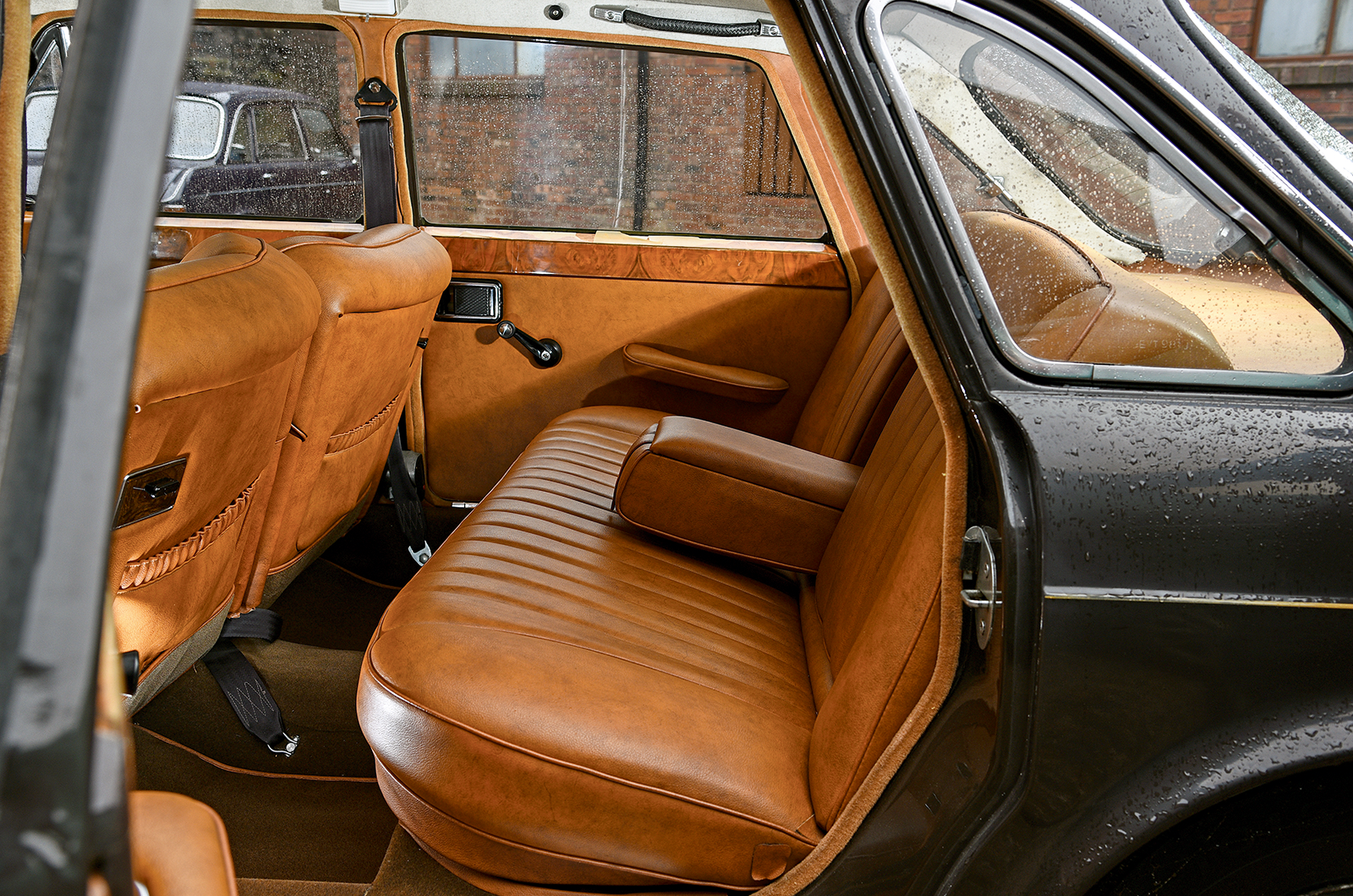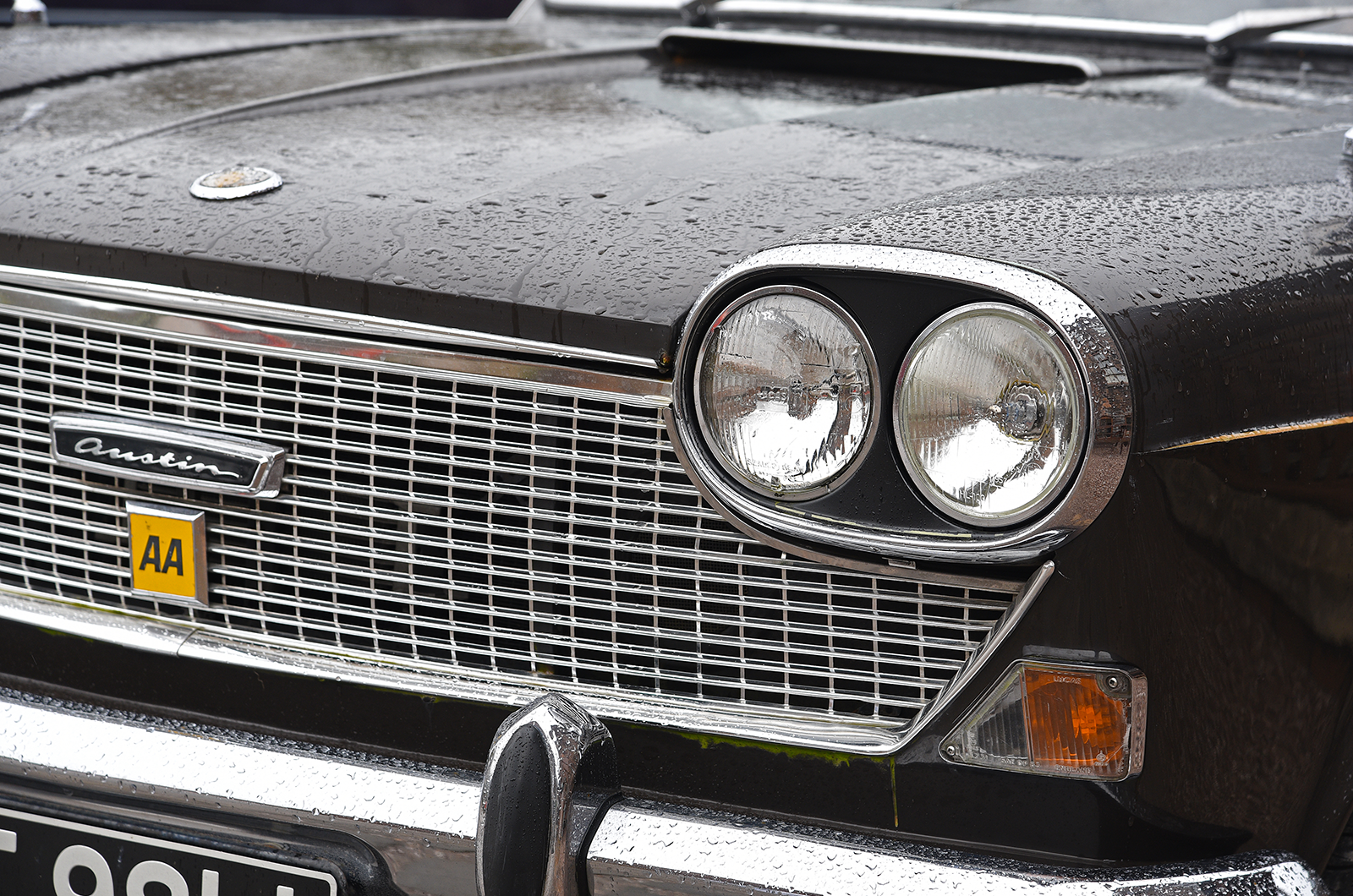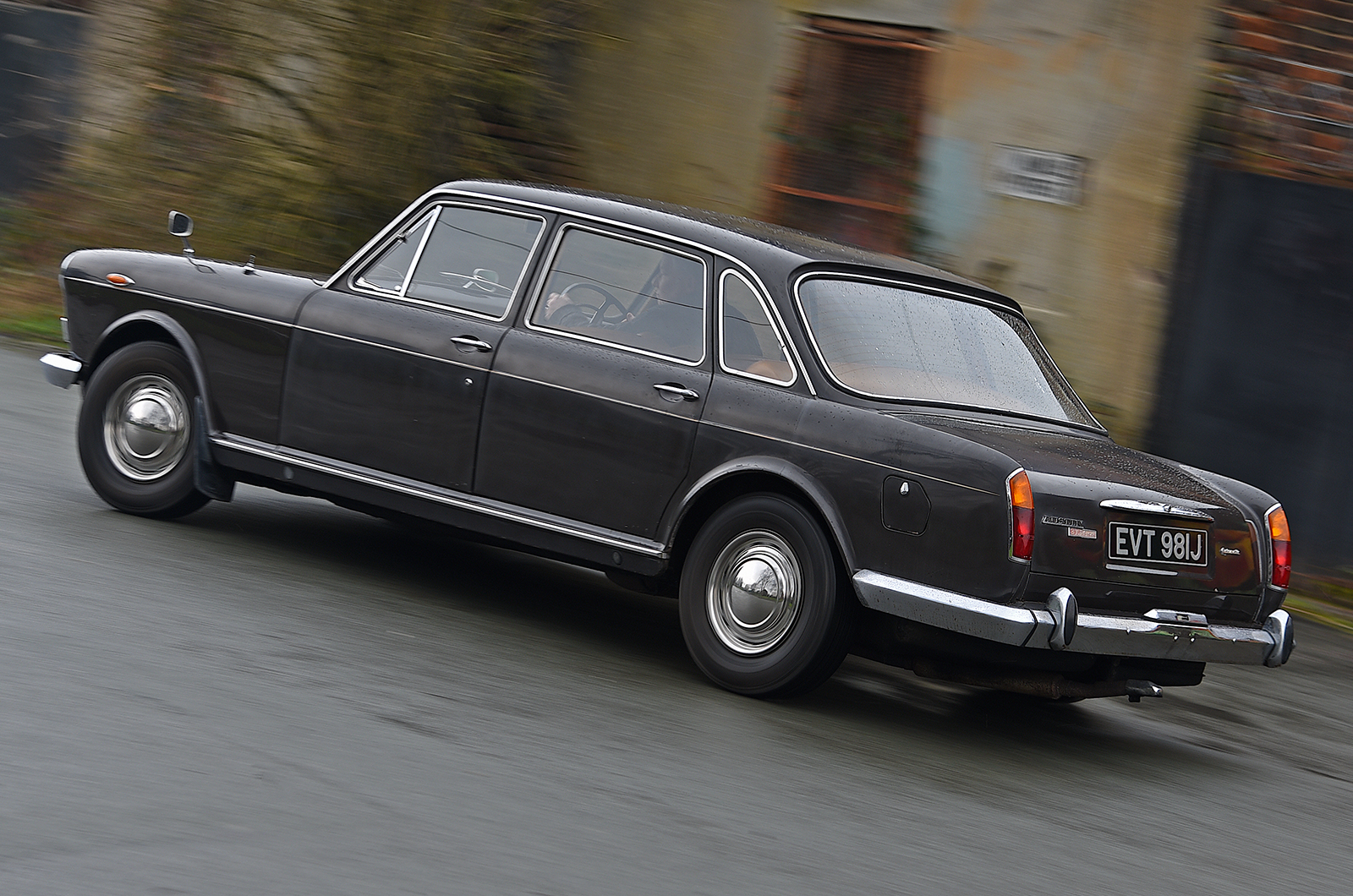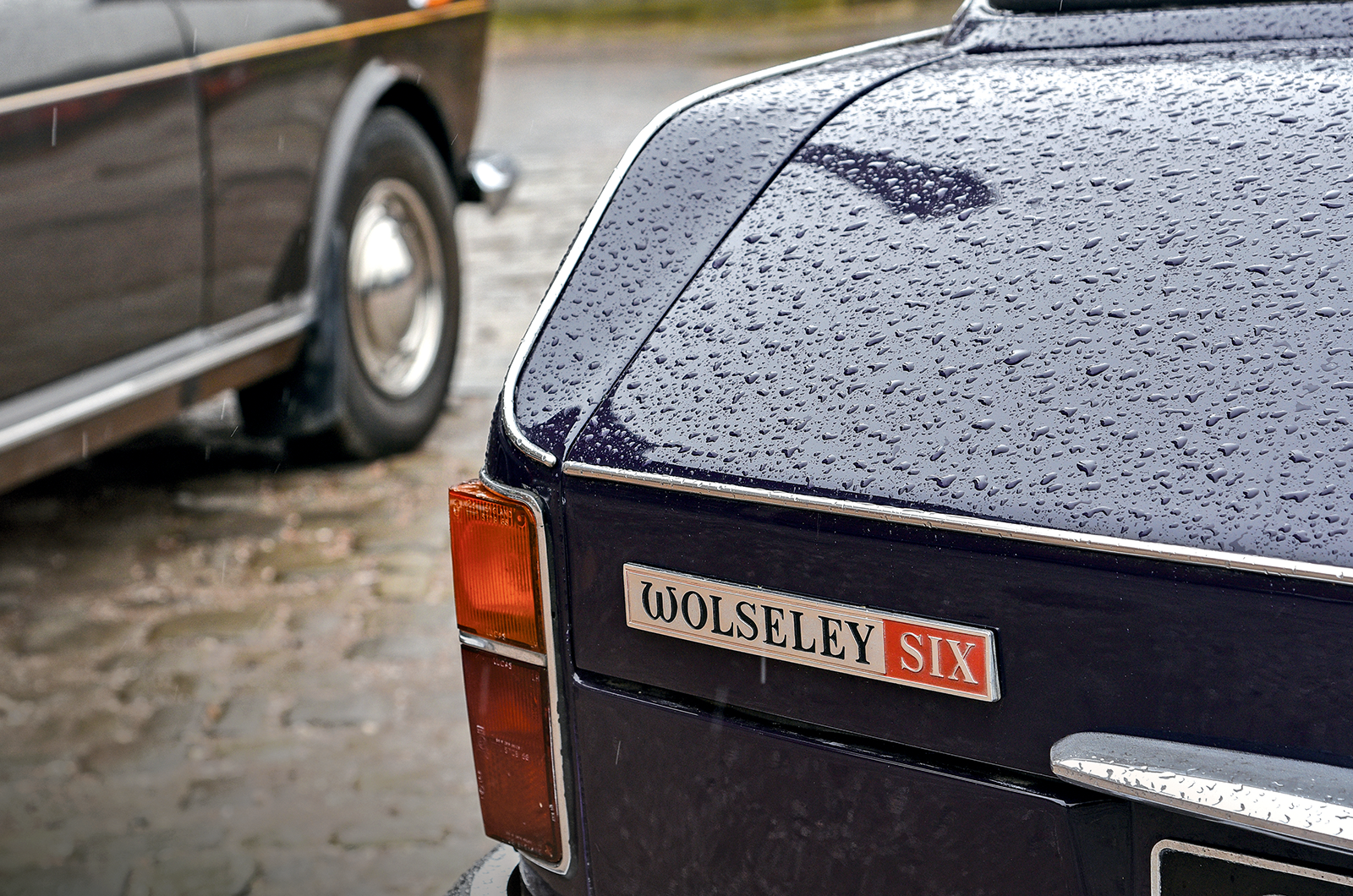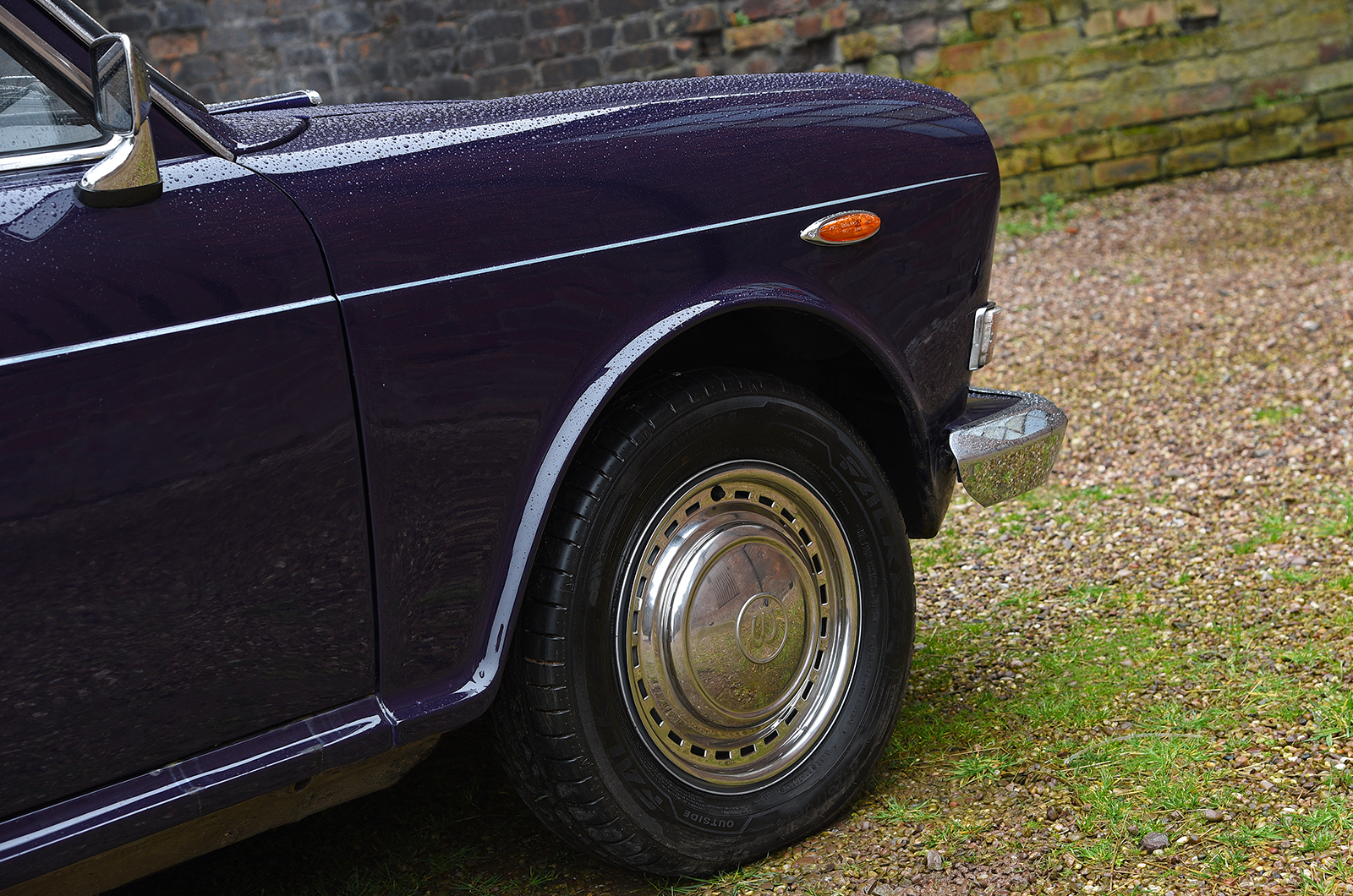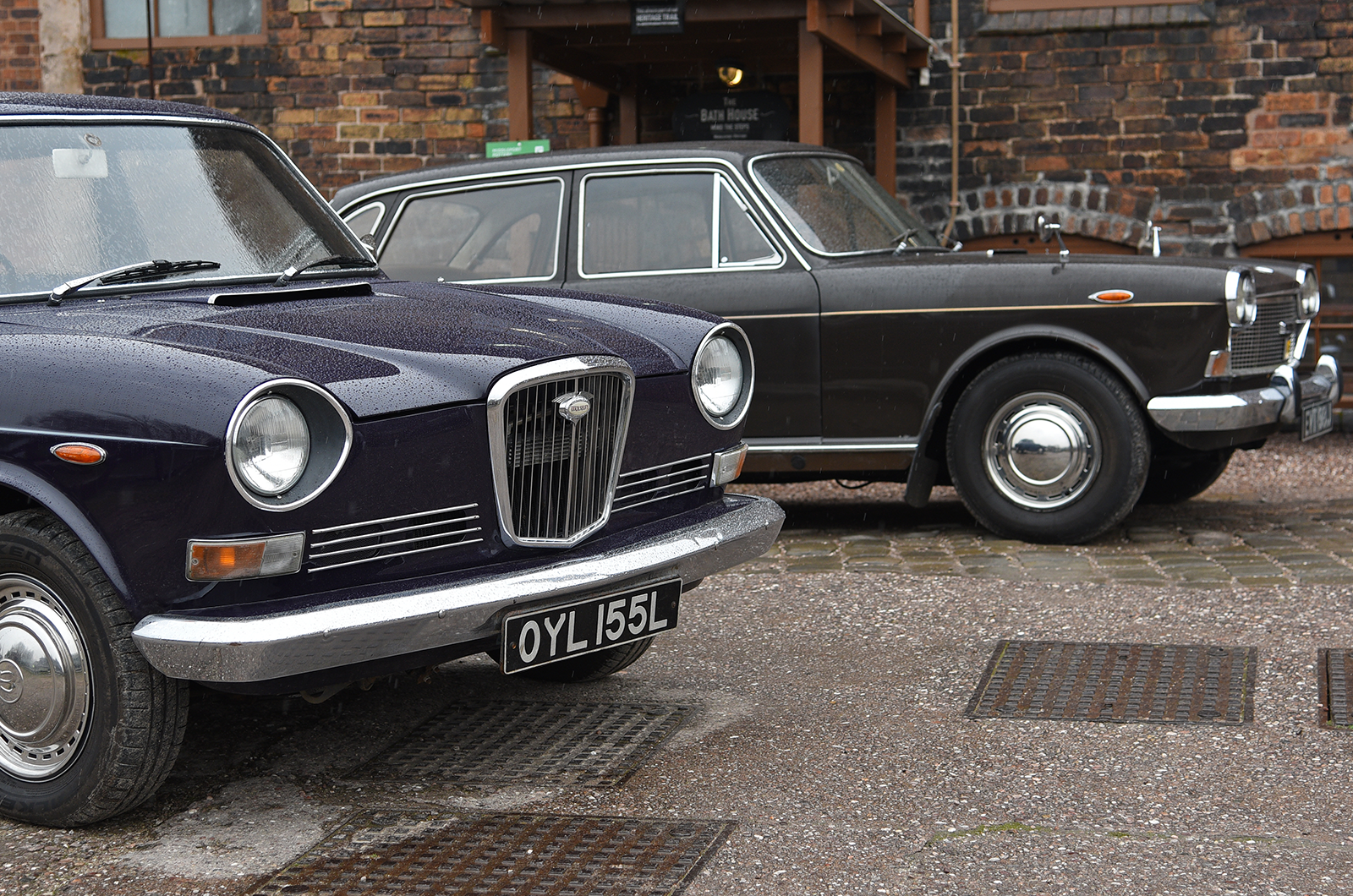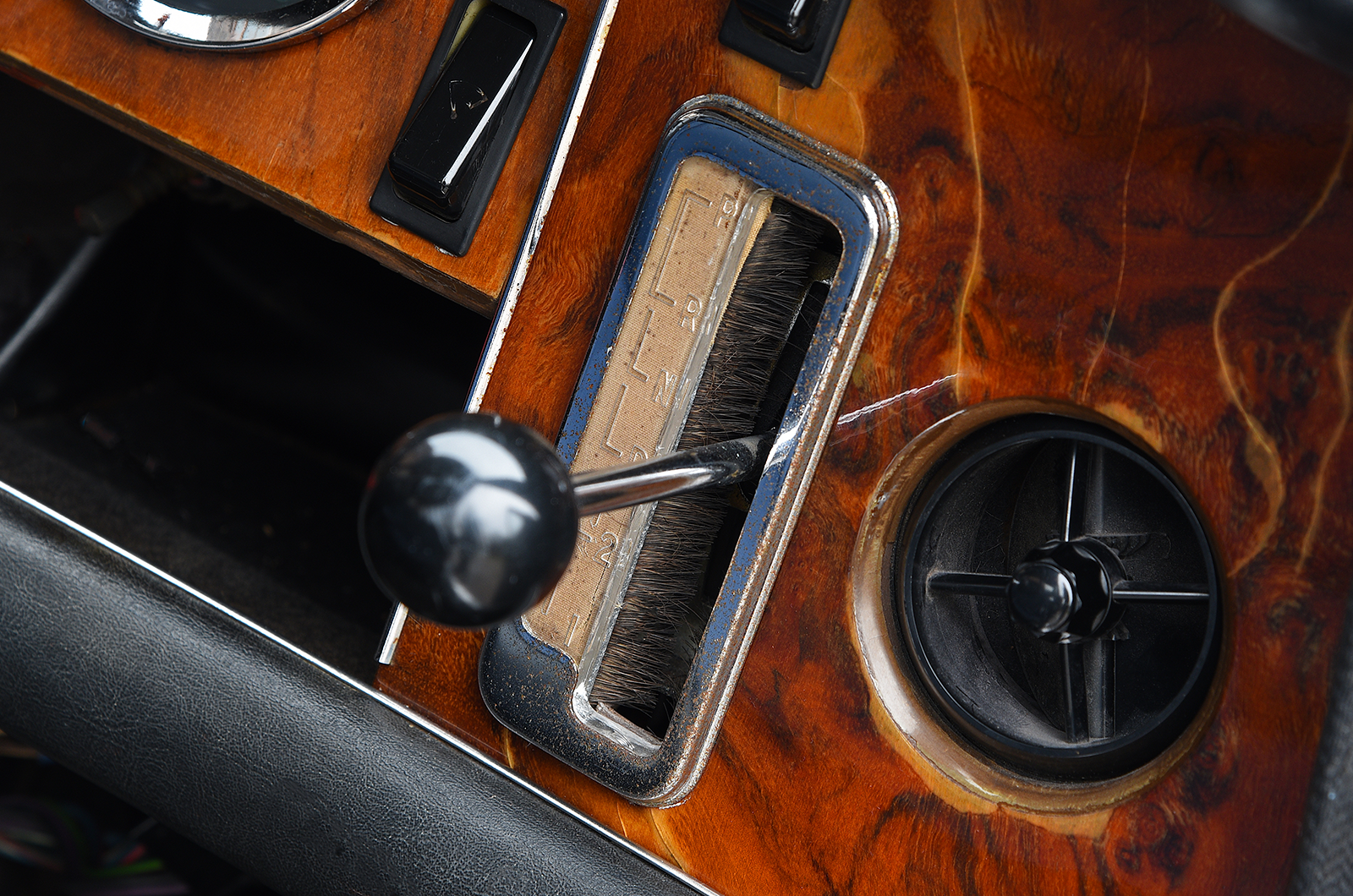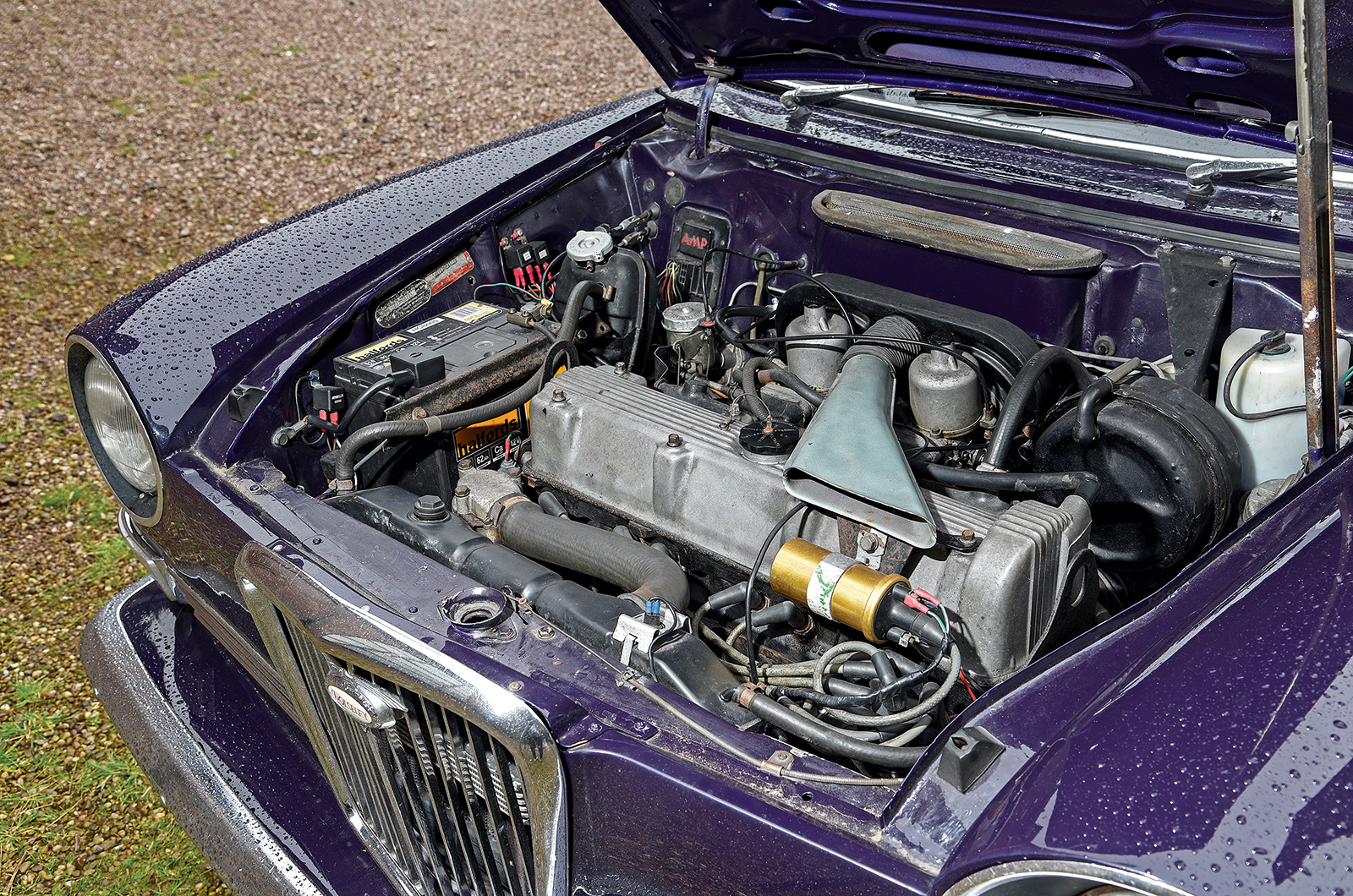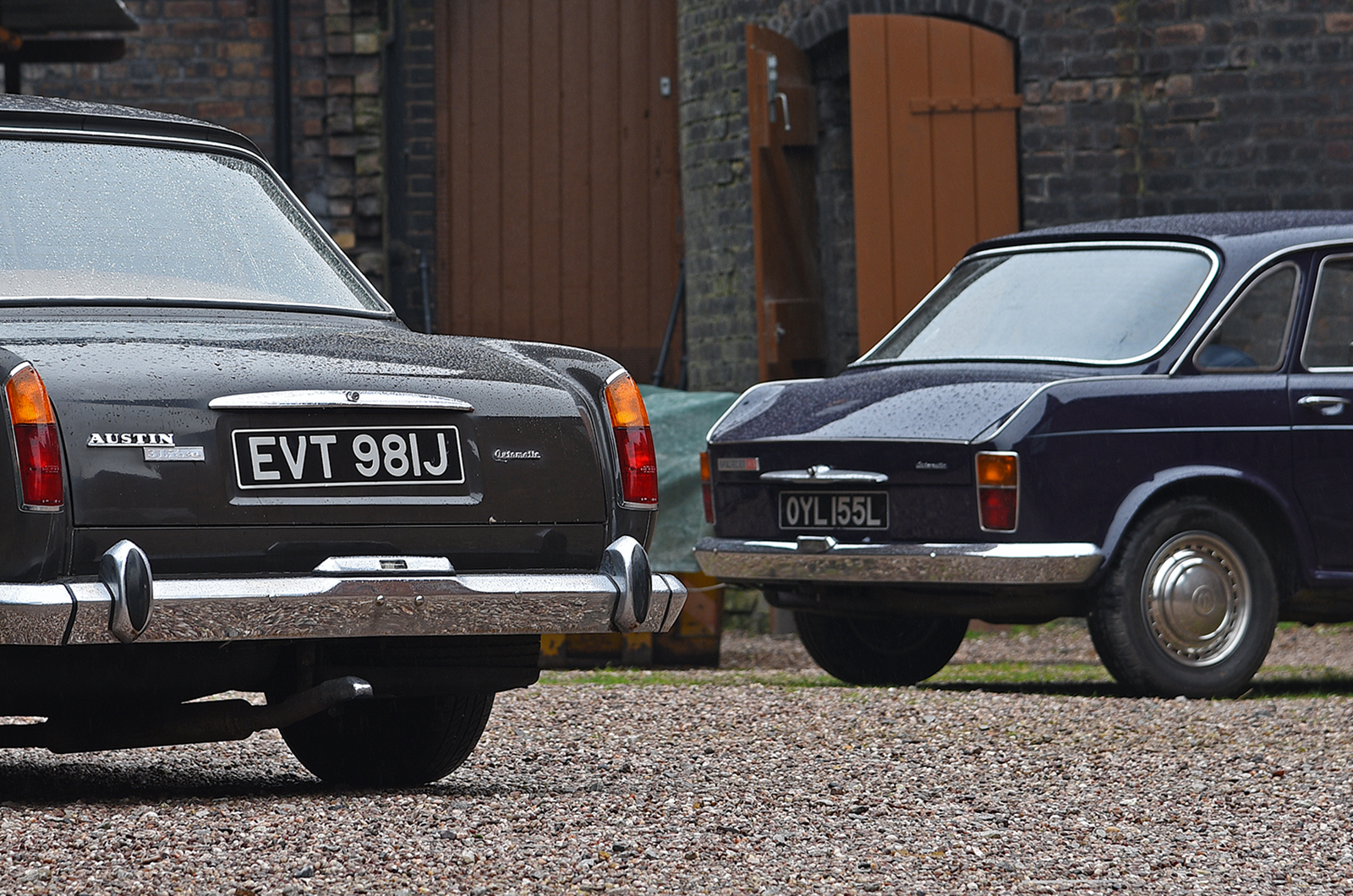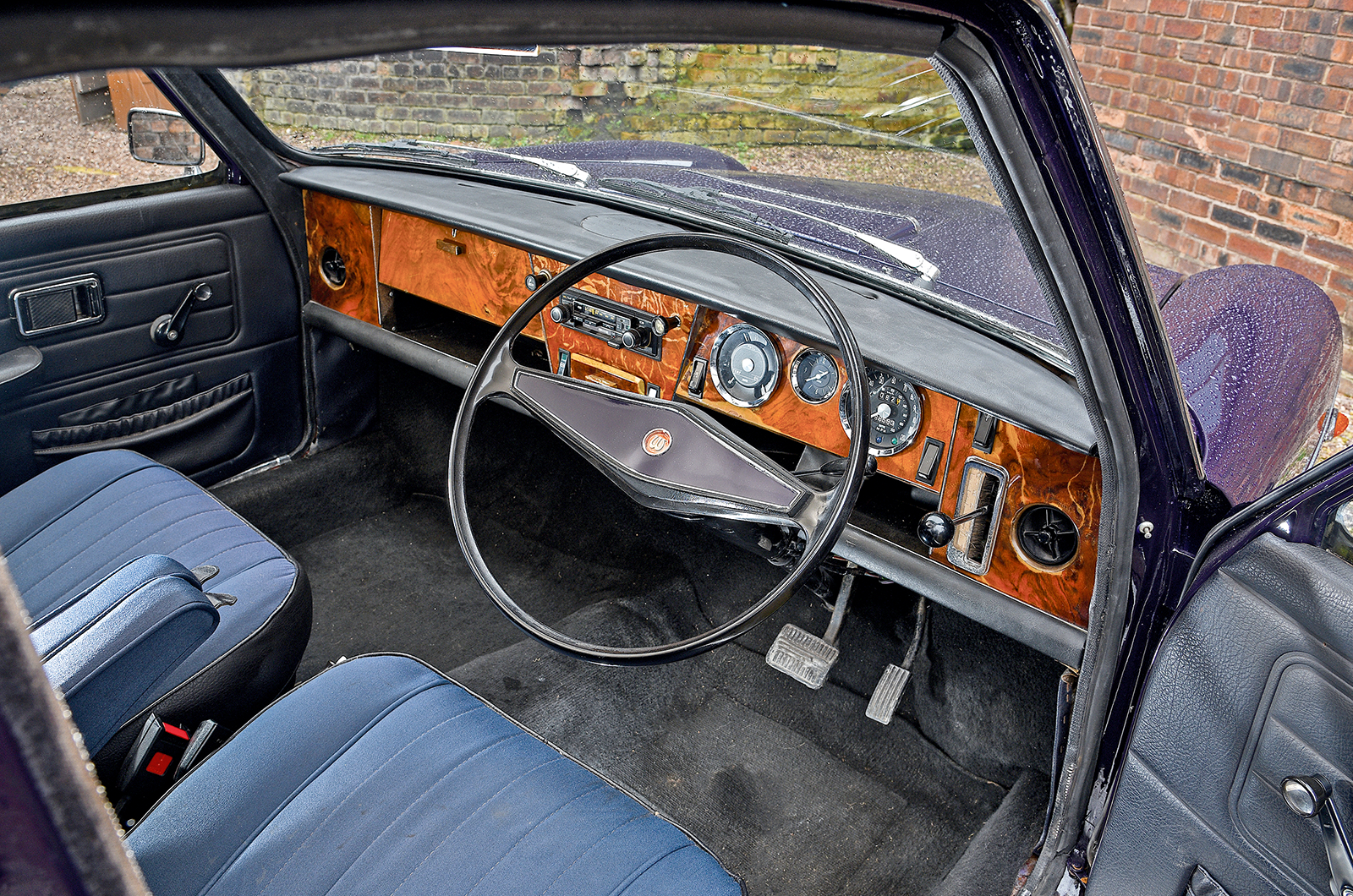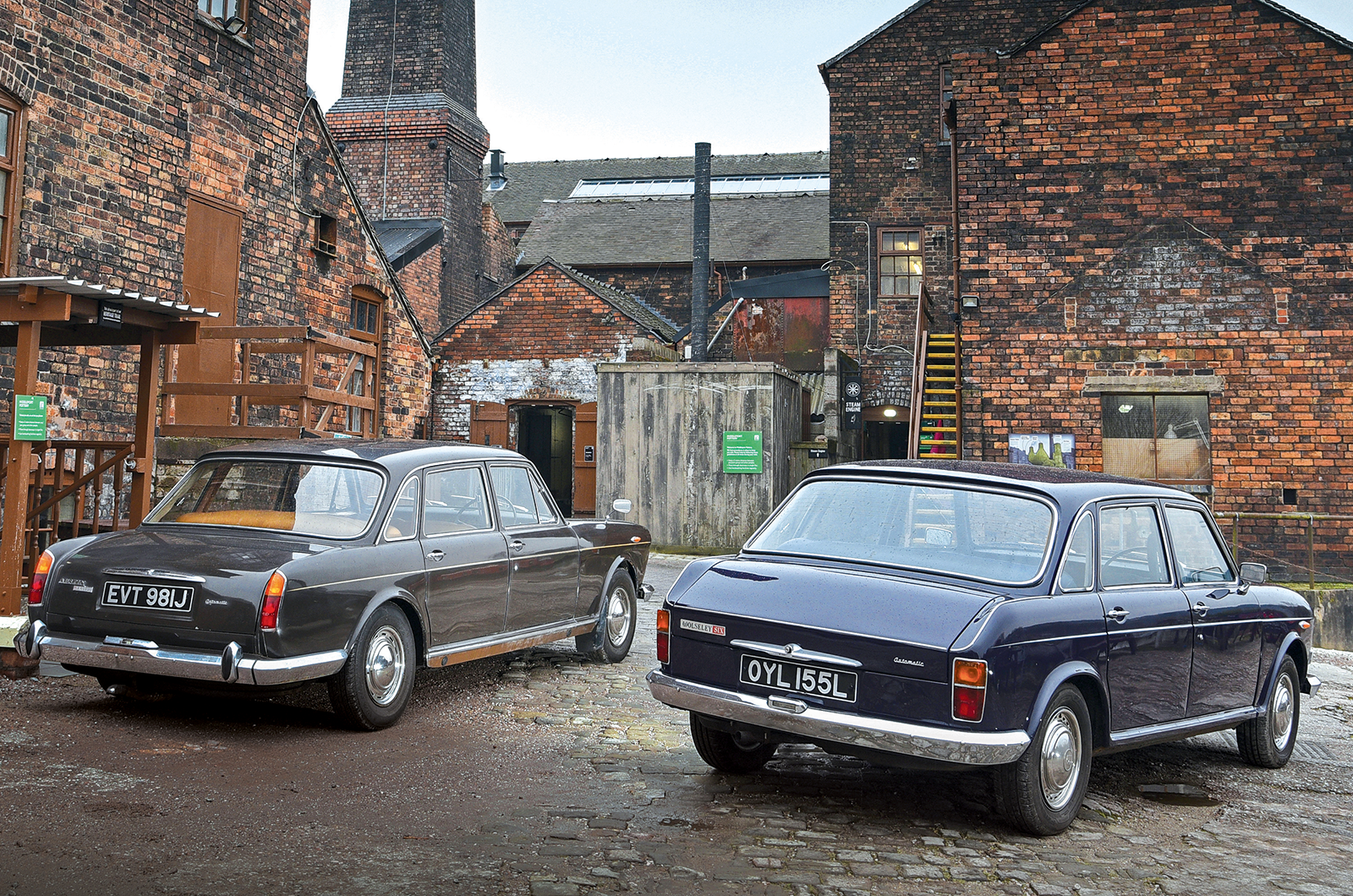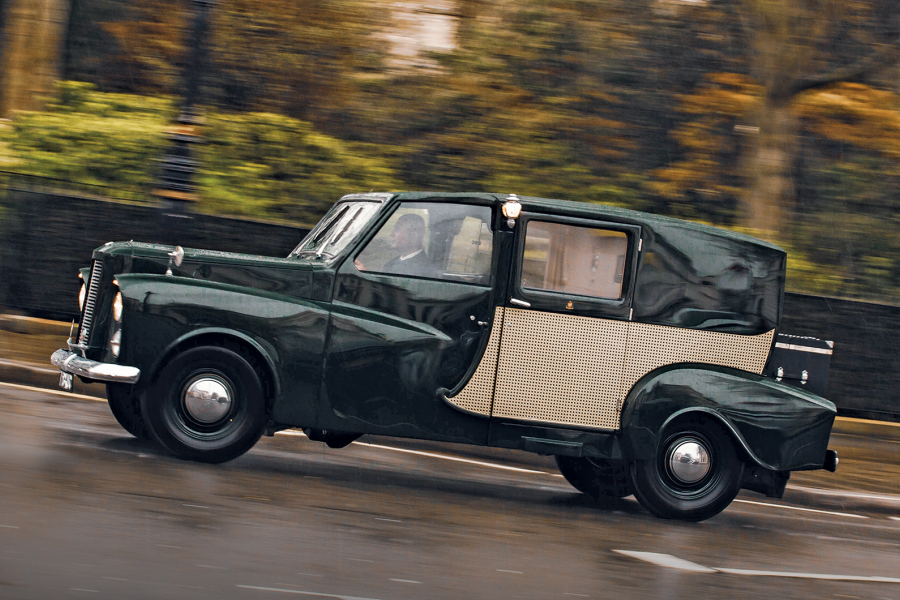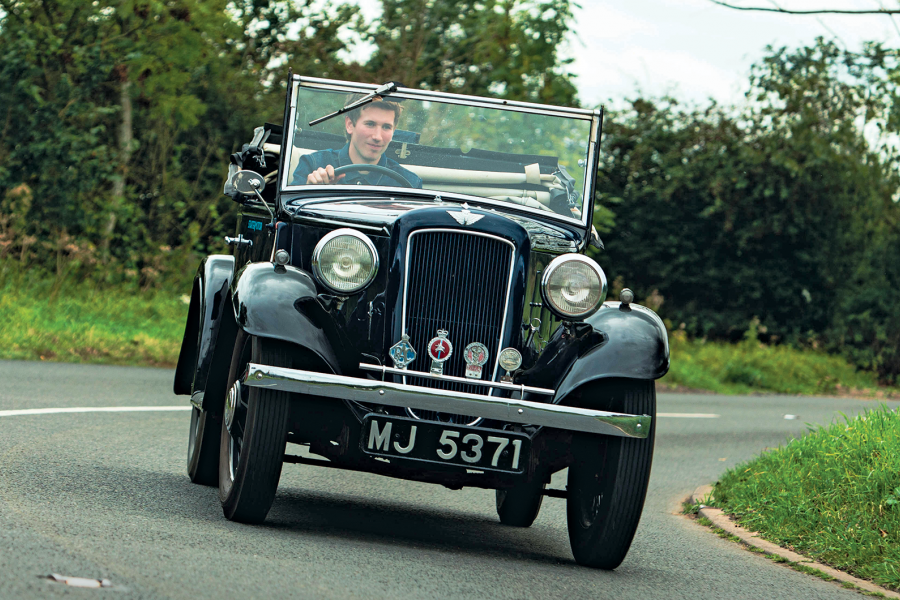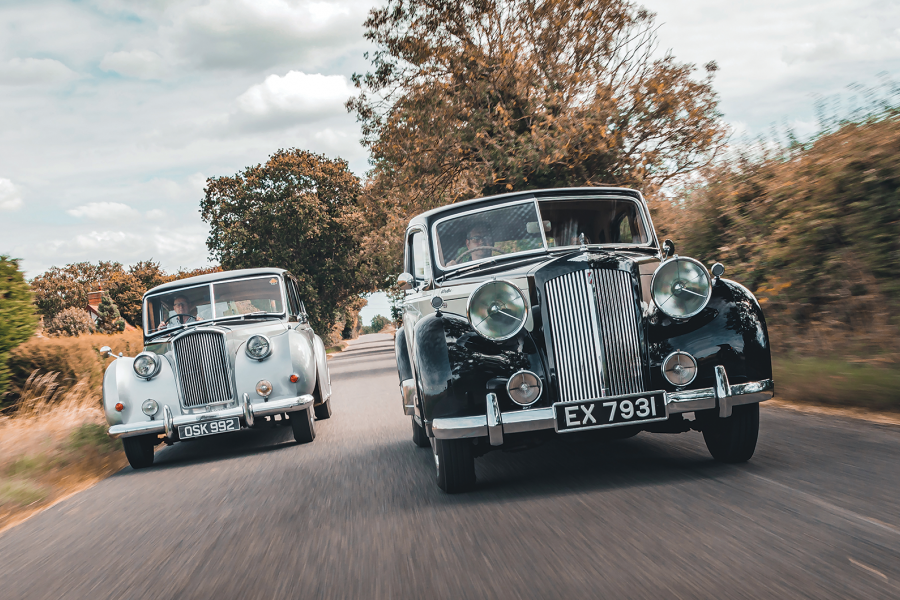It weighed only 20lb more than the B-series ‘four’ and, with 106bhp-plus, was deemed potent enough to make the four-cylinder twin-carb ‘S’ versions of the Landcrab superfluous.
It ran a front- rather than side-mounted radiator with an electric fan and alternator, the beefier front discs from the ‘S’ and a larger 12.5-gallon fuel tank.
Owners of four- and six-cylinder Landcrabs could now thrill to the decadence of an electric windscreen-washer and a handier central handbrake.
All of this came at a cost of minimal retooling to give the eight-year-old ADO17 a new lease of life. More than 40,000 were sold, the majority in Wolseley guise, which demonstrated that there was still a market for a luxury Landcrab in a more rational form.
The Wolseley Six can reach 60mph in 12.7 secs
In the metal not even the Wolseley grille, with its nostalgic backlit badge, can give the Six much visual swagger, although its simple, snub-nosed lines are elegant in comparison with most of the modern horrors around it on 2022 roads.
Like the 3 Litre, it has the ‘beer and sandwiches’ appeal of an early ’70s Downing Street summit: a democratic ‘people’s limousine’ for a television age that made the optics of the old Vanden Plas 4 Litre Rs appear uncomfortably lavish.
The 3 Litre looks more important, if not quite pompous.
Although it’s no beauty, there is something almost majestic in its profile.
The Wolseley Six stands 13ft 8in (4166mm) long
That assertive, chrome-laden front end is an odd contrast with the handsome tail, which has – dare I say it? – Bentley Flying Spur overtones, probably a hangover from the BMC hook-up with Crewe.
Its boot is much larger than the Wolseley’s and it feels bigger inside, the views out more commanding on well-upholstered front seats.
Vast rear legroom is common to both cars, and both have individual folding armrests on their front seats.
But the Bri-nylon cloth of the Wolseley seems more ordinary, and by the time this car was built it had lost the wooden door-cappings of earlier models.
The Wolseley (left) and Austin offered more charm than success
High-quality carpets, an upmarket West of England cloth headliner and lavish use of wood give a more luxurious, almost Vanden Plas feel to the 3 Litre cabin, although the trim is Ambla rather than leather.
The dashboard, with its ribbon speedometer, is more early ’50s radiogram than late-’60s music centre, but the big steering wheel has rather less of a bus-driver angle than the Wolseley Six, whose circular dials sit in a more darkly veneered, less imposing dash.
The automatic-shifter arrangements are curious. The 3 Litre’s centre-change chrome quadrant looks like something you might find in a military scout car, whereas the Wolseley has a bent stick that pokes out of a vertically orientated gate on the dashboard, to the right of the steering wheel.
Neither works very nicely: the 3 Litre’s is stiff, the Wolseley’s vague.
Our Martin Buckley finds the automatic-shifter arrangements in the Wolseley Six (left) and Austin 3 Litre to be peculiar
Both cars have quiet and conspicuously smooth engines providing gentle but amiable acceleration, although Nigel Forrest’s late-model 3 Litre feels a shade more lively than I remember.
They would probably be nicer as manuals, yet the (optional) Borg-Warner auto ’boxes provide unobtrusive gearchanges.
The whirr of the torque converter in the Wolseley is louder than the engine at times, and the clonk from the diff when engaging ‘D’ was always an issue on the 3 Litre.
There’s 110bhp from the Wolseley’s 2227cc straight-six engine
Kickdown in both cars is really just a way to use more fuel – and turn up the volume of engine noise – rather than actually go much faster.
Standard power steering makes the Austin feel less onerous to drive at lower speeds and masks the build-up of understeer at higher ones, while at the same time making any impending loss of grip difficult to judge.
You don’t miss it all that much in the Wolseley, in which it was optional.
The boot of the Austin (left) is much larger than the Wolseley’s
Owner Robert Galloway, formerly of the BMC and Leyland development department, retrofitted power assistance to his car but found it lumpy.
All things considered, the Six changes direction faithfully with a resistance to roll and understeer that was rare in the early ’70s family-sized barge class.
But had I been forced to chop in my Austin 3 Litre for a front-drive Wolseley I might have missed the more grown-up feel of the bigger car, which also happens to corner undramatically for its bulk.
Perhaps by virtue of weight it rides rather more flat than the Six, which has the slightly bouncy feel common to most Hydrolastic BMC/Leyland cars.
The imposing walnut dash of this classic Wolseley houses the gear selector
Five decades on, both of these big cars have a faithful following but for very different reasons.
The pugnacious 1800/2200 series has always appealed as an unpretentious purchase for people with large families who cared more about ruggedness and practicality than looks, and who doubtless bought-in to the mythology of the Issigonis connection.
In an increasingly superficial world that was already becoming led by marketing, the Landcrab was a determinedly unglamorous underdog, an austerely rational attempt to give the customer what BMC believed was good for them, rather than what they thought they wanted.
The front-drive layout of the Wolseley results in vast rear legroom
The Austin 3 Litre is a charming anti-hero that seems to encapsulate everything that was wrong – and some of what was right – about the misguided regime that created it.
As a lovable lemon, a public display of corporate carelessness and self-harm, the 3 Litre has a lot going for it in my book.
In the 1970s and ’80s it appeared that only banger racers loved the already not very common Austin for its rugged build and crowd-pleasing rear-drive handling.
The rarity that was this activity’s natural outcome gave another dimension to the weird enchantment of a car that I know I shouldn’t like, but I do.
Images: Will Williams
Thanks to: Landcrab Owners’ Club International; Austin 3 Litre Owners’ Club; Re-Form Heritage
Factfiles
Austin 3 Litre
- Sold/number built 1967-’71/9992
- Construction steel monocoque
- Engine all-iron, ohv 2912cc straight-six, twin SU HS6 carburettors
- Max power 124bhp @ 4500rpm
- Max torque 161lb ft @ 3000rpm
- Transmission three-speed auto, RWD
- Suspension independent, at front by double wishbones rear semi-trailing arms; interconnected, self-levelling Hydrolastic spring/damper units f/r
- Steering power-assisted rack and pinion
- Brakes discs front, drums rear, with servo
- Length 15ft 5¾in (4718mm)
- Width 5ft 6¾in (1695mm)
- Height 4ft 8in (1422mm)
- Wheelbase 9ft 7½in (2932mm)
- Weight 3377lb (1529kg)
- 0-60mph 16 secs
- Top speed 98mph
- Mpg 18-22
- Price new £1696 5s
- Price now £8-12,000*
Wolseley Six
- Sold/number built 1972-’75/25,214
- Construction steel monocoque
- Engine all-iron, ohc 2227cc straight-six, twin SU H4 carburettors
- Max power 110bhp @ 5250rpm
- Max torque 126Ib ft @ 3500rpm
- Transmission three-speed auto, FWD
- Suspension independent, at front by lower wishbones rear trailing arms; interconnected Hydrolastic spring/damper units, anti-roll bar f/r
- Steering rack and pinion
- Brakes discs front, drums rear, with servo
- Length 13ft 8in (4166mm)
- Width 5ft 7½in (1715mm)
- Height 4ft 7½in (1410mm)
- Wheelbase 8ft 10in (2692mm)
- Weight 2617Ib (1187kg)
- 0-60mph 12.7 secs
- Top speed 102mph
- Mpg 26
- Price new £1719.58
- Price now £6-10,000*
*Prices correct at date of original publication
READ MORE
Battle for the boardroom: Austin 3 Litre vs Ford Executive vs Vauxhall Viscount
The battle for middle England: Rover 3-Litre vs Wolseley 6/99
BMC’s Farina family: everyday Italian chic
Martin Buckley
Senior Contributor, Classic & Sports Car
